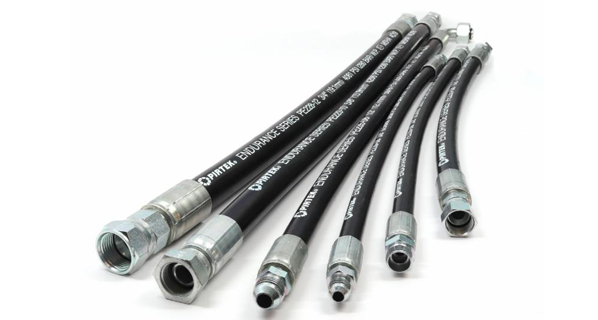When Fluid Power Was a Public Utility
 By Ian J. Ford, Senior Product Manager, CFC Industrial Training.
By Ian J. Ford, Senior Product Manager, CFC Industrial Training.
Beneath the streets of London, lies a particular plexus of old cast iron pipes. Most of these precisely joined tubes now house telecommunication cables, and the derelict remainder will likely corrode and disintegrate with other forgotten infrastructure into the ancient earth that bore much of modern industry. This is the vestige of a great high-pressure hydraulic power network that provided public fluid power to industrial and commercial entities throughout the city for a century.
The London Hydraulic Power Company, established by Act of Parliament in 1884, maintained 800 psi (5.5 MPa) of hydraulic pressure to an extensive grid of mains. These mains could be tapped into and metered, not dissimilar from today’s gas and electric utility providers. At its peak, circa 1930, the London Hydraulic Power Company’s five pumping stations, pumped 33 million gallons of water through 186 miles of pipe each week, powering thousands of machines. Massive vertical, weighted piston accumulators were also employed for short-term storage of the pressurized Thames water.

The London Hydraulic Power Network circa 1960. Original image source: http://douglas-self.com/museum/power/waternetwk/waternetwk.htm
Having fluid power transmitted to shops, hotels, theatres, docks, railway yards, and factories allowed for revolutionary applications. The power transmission was affordable, reliable, clean, quiet, and efficient. Countless lifts, cranes, presses, and industrial machinery were driven in the factories and buildings that were effectively ‘plugged in’ to this hydraulic power source. Furthermore, it energized the cultural wonderment of a booming middle-class. Hotel vacuums hummed, cathedral organs thundered, theatre fire safety curtains were drawn, fire hydrants were at the ready, orchestra and theatre stages rotated and lifted, floors were lowered to form massive swimming pools – all by fluid power. Even the bascules of the famous Tower Bridge were raised and lowered with 3,000 flowing gallons.
Small shops were greatly empowered by having hydraulic power ‘on-tap’. Steam engines took up significant space and came with great health and safety risks. Later, electric motors were still far larger than hydraulic motors, and had their fair share of hazards and use limitations, particularly in damp environments. The pumping stations of the hydraulic power network were offsite from end users, creating far more hospitable working environments. It was a triumph to Victorian London and was in extensive use until its damaging during World War II and subsequent decline.
London’s hydraulic power network was not singular. Hydraulic power networks existed in other cities in the United Kingdom: Liverpool, Hull, Birmingham, Manchester, and Glasgow. In Melbourne and Sydney, Australia. In Antwerp, Belgium; Geneva, Switzerland; and Thames and Oamaru, New Zealand. Entrepreneurs, engineers, and governments alike, recognized the immense benefit of fluid power as a prime part of a city’s industrial and manufacturing capability. Implementation of hydraulic power as a public work helped charge the social and technical development of exceptional modern cities.
In our homes and businesses, energy and resources are effectively ‘plug-and-play’. Flip a switch for electric. Turn a knob for water. Swivel a valve for gas. Our machines and systems connect to the grid relatively easily. We take power production for granted, in some ways. Though technology and infrastructure has evolved beyond pumping and pressurizing river water, it would be short-sighted not to gaze retrospectively and admire the engineering marvel of such a system as the London Hydraulic Power network.
Imagine having an offsite hydraulic power unit that you do not see, hear, or in any way maintain; but its energy is at the ready for your actuators with a reasonable, metered fee. From the 1870s, until just a generation or two ago in 1977, this was a reality. The London Hydraulic Power network showed great vision. Its use traversed industry and arts, and served a city exploding with growth. Perhaps, glancing back to the past, we will adopt the same imagination and determination to prioritize local manufacturing and, in our own way, develop new foundations to support it – unto the great flourishment of our cities and communities.







